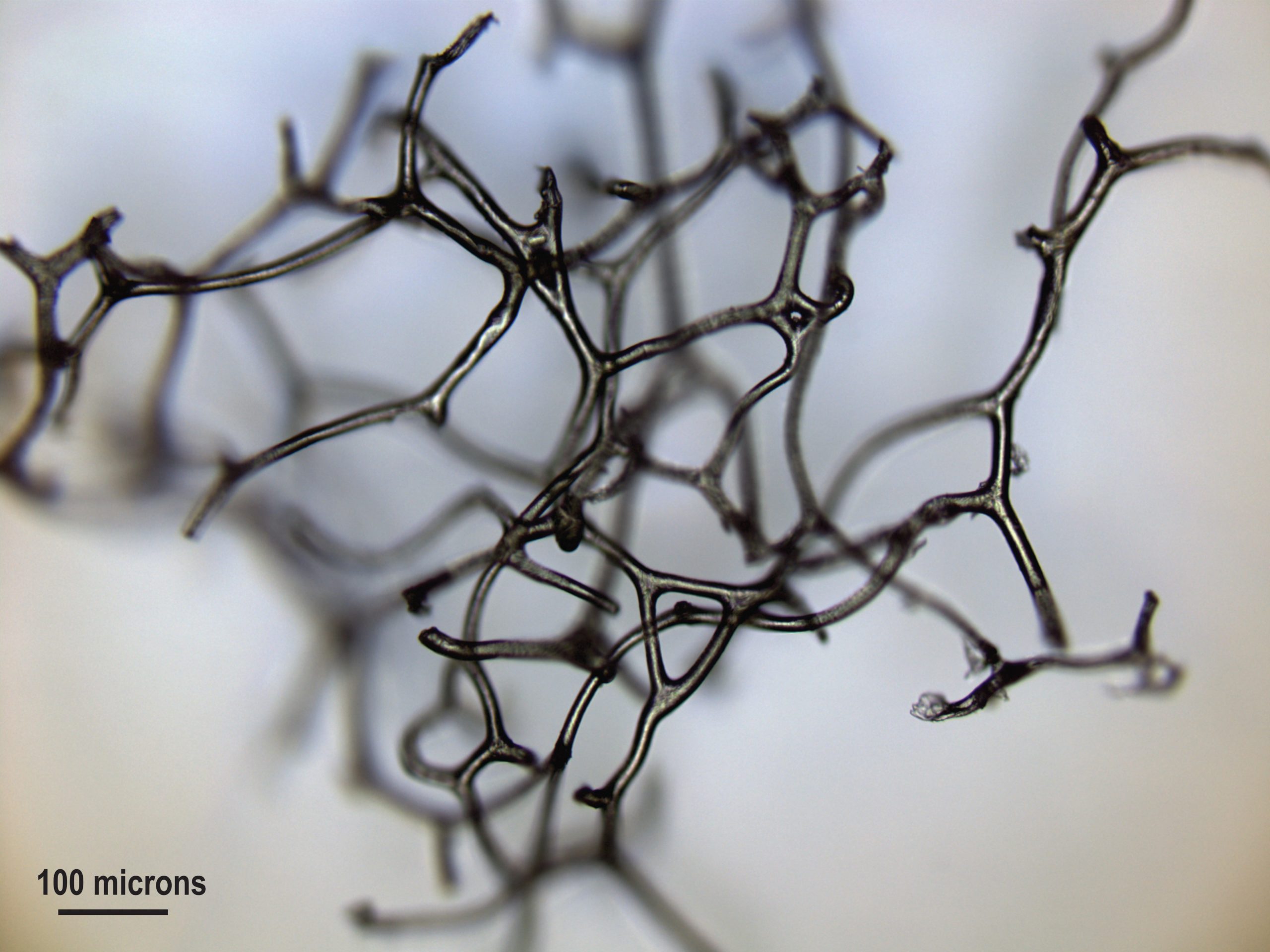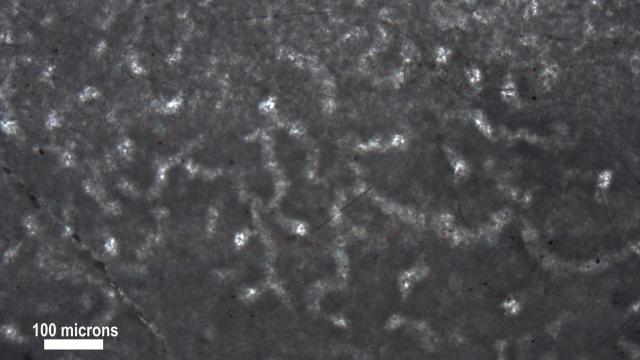Ancient rocks from northwestern Canada have been found to contain structures consistent with sea sponges. At 890 million years old, they could be the oldest known animal fossils on Earth.
Simple, single-celled life forms first appeared on Earth about 3.4 billion years ago, but it took a while for more complex animal life to emerge. The Cambrian Explosion of complex lifeforms happened around 540 million years ago, which coincides with the oldest undisputed sponge fossils on record.
In 2018, the discovery of steroids — a known biomarker — in rocks dated to between 660 million and 635 million years ago pushed the emergence of sponges to the Neoproterozoic, which is at least 100 million years before the Cambrian. Genetic analyses of modern sponges likewise suggests an early origin for these sea creatures, further reinforcing the notion that sponges were the first animals to appear on Earth.
Paco Cardenas, a biologist at Uppsala University in Sweden who wasn’t involved in the new study but is an expert on sponges, said this discrepancy between the fossil record and the chemical and DNA evidence “has been highly debated these past years.” Hence the importance of the newly reported discovery, which has implications for how we understand the origin of all animal life on Earth.

Elizabeth Turner from Laurentian University in Sudbury, Canada, is the sole author of the new Nature paper, and she reports on the discovery of fossil-like structures found in rocks pulled from the 890-million-year-old Little Dal reefs in the Stone Knife Formation of Canada’s Northwest Territories.
“If these fossils are confirmed to be sponge fossils, they would definitely be the first fossils of animals in the fossil record, thus pushing back the emergence of animals to 350 million years before the Cambrian,” Cardenas explained in an email. This recent discovery “may finally reconcile those [previous] lines of evidence,” but it “also raises new questions,” he added.
Peering at the rocks with a microscope, Turner noticed tube-shaped structures covered by mineral calcite crystals. These features bore a striking resemblance to the fibrous skeletons of horny sponges, and they formed from the decay of these ancient creatures, she argues. Horny sponges are still around today, and you might even be using one as a bath sponge (so yeah, humans might actually be descended from bath sponges, and as a dedicated fan of Spongebob Squarepants, I’m actually very cool with that).
Turner was able to rule out other interpretations of the microstructures owing to the configuration of the fossil material.
“It consists of little tubes that branch divergently and then rejoin to form a complex, three-dimensional meshwork,” she said in an email. “Of the branching organisms that could be considered as alternative interpretations, none of them have that kind of three-dimensional meshwork — not true algae, not bacteria, and not fungi.”

At the same time, horny sponges “have exactly that kind of microstructural meshwork,” and such meshwork “has also been described in undisputed fossil sponges,” Turner added.
Cardenas noted that “one should highlight that these are not undisputed sponge fossils, as suggested by the title of the article.” Indeed, the title of the new paper describes them as “possible” sponge fossils, but they “do look like the remains of sponge protein skeleton — called spongin — as the ones today found in horny sponges,” but “researchers will wait confirmation from other fossils of the same time period,” he wrote.
That the planet’s earliest animals were sponges, or at least sponge-like, is not a surprise, “given that sponges are the most basic type of animal both today and in the fossil record,” wrote Turner. What’s more, the “age of the material I present is compatible with the predictions of molecular clocks, which suggest that sponges emerged around this time,” she explained, adding that “fossil spongiologists have predicted that we should find this type of material in considerably older rocks.” The major takeaways of this study “are pretty much exactly what was predicted through several other unrelated lines of work,” Turner noted.
Cardenas, on the other hand, said finding sponge fossils more than 250 million years before the appearance of the aforementioned steroid sponge compounds is “unexpected.” Other compounds have been found from the same period as the newly reported fossils, but “they have not been assigned to sponges yet,” he said, “although their resemblance” to the sponge compounds “is acknowledged.”
Perhaps more surprising is the apparent appearance of ancient sponges some 90 million years before oxygen in Earth’s atmosphere reached levels required to sustain animal life — or so we thought. If the new finding can be confirmed, it means sponges, and therefore complex animal life, appeared prior to the second of Earth’s two oxygenation events, namely the Neoproterozoic oxygenation event.
“If I am correct in my interpretation of the material, the earliest animals appeared before that event and may have been tolerant of comparatively low oxygen levels,” Turner noted.
The discovery also suggests that complex life forms were not completely wiped out during the Cryogenian ice ages that occurred between 720 million and 635 million years ago. These were the so-called Snowball Earth episodes, a time when our planet’s entire surface, it has been controversially argued, was covered in ice.
Assuming the new interpretation is correct, it means sponges existed 890 million years ago, so the question emerges: How much further back did they exist? As the new research points out, sponges didn’t seem to be bothered by the lack of oxygen and intensely powerful ice ages, so it’s not unreasonable to suggest an even earlier emergence.
“The geological record needs to be much more intensely interrogated, and with a really open mind, to answer these questions,” said Turner.
More: These squiggles may be some of the oldest fossil life on Earth.
